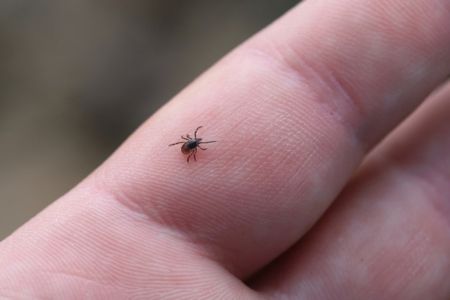Lyme Disease Awareness: Helping You to Enjoy the Outdoors Safely

Spring is finally here, signaling the start of longer days and warmer temperatures. But it’s also the season when ticks reappear and become active, making it a crucial time to spread Lyme disease awareness. Ticks carry Lyme disease, and if you receive a bite from one infected by it, there is a zero to 50% chance of contracting it. This blog will educate and raise your awareness about this lesser-known disease and how to protect yourself while venturing outdoors.
How Many People Get Lyme Disease?
The CDC estimates that approximately 476,000 people are diagnosed and treated yearly for Lyme disease. Now, not every bite from a tick is a guarantee of contracting Lyme disease. A few factors are involved, such as the species of tick, where it came from (which in the Northeast is called a “deer” tick), and how long it bit you. In most cases, it will need to be attached to you for at least 36 to 48 hours to transmit the disease to its host.
What Do I Do if I See A Tick on Me or My Pet?
After being in a wooded or grassy area, you need to be aware of a tick being on you and your pets, especially dogs. If you see one attached to you or your pets, you must use fine-tip tweezers to grasp it as close to your skin surface as possible and pull upward with steady and slow pressure. Afterward, draw a circle around the bite area for monitoring purposes. Then, consult a healthcare provider such as Harmony Healthcare Long Island to discuss treatment and to have your blood tested.
Symptoms to Be Aware Of
Early detection and treatment are crucial. Lyme disease can progress to more severe symptoms, such as arthritis, neurological issues, and heart problems. Some common symptoms of Lyme disease include:
- Fatigue
- Headache
- Fever and chills
- Muscle and joint pain
- Swollen lymph nodes
- Skin rash, often in the shape of a bulls-eye
Some Helpful Tips to Help Prevent Tick Bites
Lyme disease awareness starts with prevention methods. Here are several ways to protect yourself from tick bites and the possibility of contracting Lyme disease:
- Use insect repellent containing DEET on exposed skin.
- Wear long sleeves and pants when walking around trees and overgrown grassy areas.
- Get your dog a flea and tick collar and talk to your vet about prescription preventative medicine.
- Use an adhesive lint roller over your clothing, arms, and legs following any outdoor activities to pick up any ticks that aren’t attached.
- Shower soon after coming indoors to wash off any ticks that may be on your skin.
- Remove ticks promptly using fine-tipped tweezers and grasp the tick as close to the skin as possible.
- Consider landscaping modifications, such as creating a buffer zone between wooded areas and your home to reduce tick exposure.
- Check yourself, your children, and your pets for ticks after spending time outdoors. Ticks can attach themselves to the skin and may go unnoticed if not thoroughly checked.










